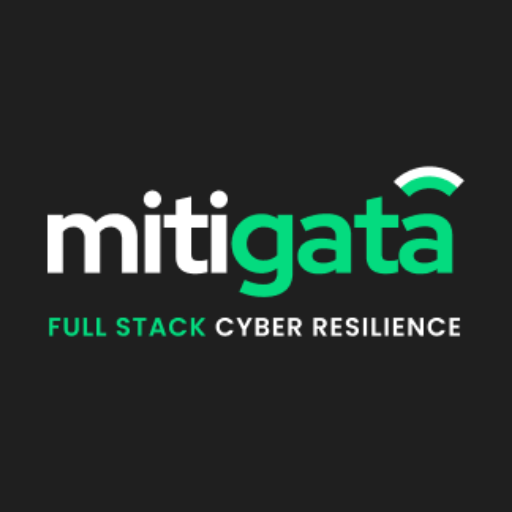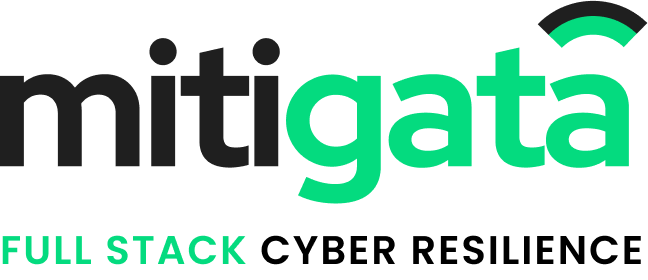Financial institutions are targeted by 23% of all cyber events, which is over 300 times higher than other industries.
Many of such incidents involve the exposed sensitive investor information and disrupted businesses.
The Securities and Exchange Board of India (SEBI) recognised the growing threat and implemented the Cybersecurity and Cyber Resilience Framework (CSCRF) as a way to secure the country’s financial sector.
The framework is organized around 6 main functions: governance, identification, protection, detection, response, and recovery.
While the first three rely on solid governance and proactive policies, the latter three are fully dependent on having the appropriate cybersecurity instruments in place.
In this guide, we’ll explore the top cybersecurity solutions that help SEBI-regulated firms achieve CSCRF compliance and explain how regular audits and VAPT can strengthen your defences and keep penalties at bay.
Mitigata: Your Partner in CSCRF Compliance

As trusted partners for over 800 organisations, we manage the entire compliance process, while you focus on your core business activities.
Our team will carry out gap assessments, policy development, and vulnerability assessment and penetration testing (VAPT), set up a Security Operations Centre (SOC), and obtain certification to make sure that nothing ‘falls through the cracks’.
The Smartest Way to Get SEBI CSCRF Certified Fast
Achieve SEBI CSCRF certification at 30% reduced cost using our enterprise-grade tools and in-house cybersecurity teams.

Why choose Mitigata?
- End to End Support: Our team will manage the planning, implementation, audits, and certification.
- Faster Compliance: Our proven expertise ensures you get SEBI compliance without any delays and penalties.
- Cost-Effective: Achieve full compliance at lower costs with enterprise-grade tools.
- Complete Cybersecurity Coverage: Certified VAPT professionals and a 24×7 SOC, all managed internally.
- Proven Track Record: Trusted by 800+ businesses across 25+ industries.
India is a hub of startups, but most of them struggle with basic information security. Check out these most trusted ISO 27001 Compliance tools used by businesses!
What is SEBI CSCRF, and Why Is It Important for Financial Businesses?
The Securities and Exchange Board of India (SEBI) implemented the Cybersecurity and Cyber Resilience Framework (CSCRF) to protect India’s financial markets from a continuously changing cyber threat landscape.
Think of the CSCRF as a comprehensive playbook of orders and expectations for stockbrokers, asset management companies, and other market intermediary participants that covers expectations to comply with to protect financial data and ensure orderly trading.
- SEBI expects each registered entity to adopt organised cybersecurity practices including, but not limited to:
- Implementation of cybersecurity policies on data protection, incident management, and access management.
- Formulation of periodic risk assessments to identify weaknesses in the networks and systems.
- Conducting vulnerability assessments and penetration testing (VAPT) to detect and resolve any security vulnerabilities.
- Reporting events to SEBI and CERT-In within the required time range.
Financial organisations that adhere to SEBI’s cybersecurity framework not only meet regulatory requirements but also increase consumer trust, secure business operations, and lower the risk of costly cyber incidents.
Core Elements of Cybersecurity Tools for SEBI CSCRF Compliance
SEBI’s CSCRF compliance needs putting the right cybersecurity tools that actually work together to spot threats, stop attacks, and help you recover fast. These tools are the basis for a secure and compliant IT ecosystem.
Threat Detection and Monitoring (SIEM Tools)
SIEM systems act as your organisation’s watchdog. They pull in data from every corner of your IT setup, analyze patterns, and flag anything suspicious before it becomes a real problem.
SEBI wants you monitoring your systems around the clock, and a good SIEM makes that possible. It catches the odd login attempt at 3 AM or unusual data transfers that human eyes might miss.
VAPT Tools for Vulnerability Management
Every organization has weak spots. VAPT tools find them before hackers do. These solutions scan your networks, apps, and servers, looking for security gaps.
Then they go a step further by actually testing those vulnerabilities, simulating real attacks to see what damage could happen. SEBI requires these checks every quarter, preferably through CERT-In empanelled auditors.
Fix the holes now, or someone will exploit them later.
Access Control and Data Encryption Tools
Not everyone in your company should access everything. Tools employing multi-factor authentication (MFA), role-based access control (RBAC), and end-to-end encryption ensure that only users with appropriate privileges can access sensitive systems – an important part of SEBI’s requirements to prevent unauthorised access and data violation.
The Fast Lane to SEBI CSCRF Certification Starts Here
800+ B2B clients trust us for faster and more reliable SEBI CSCRF compliance across industries.

Incident Response Systems
Sometimes, even the strongest defenses are compromised. You need mechanisms that enable you to take quick action when that occurs.
Your team can detect the breach, contain it, evaluate the damage, and correctly report it with the use of incident response tools.
You just have six hours from the time of detection to report cybersecurity events to SEBI. It is almost hard to reach that deadline without the right incident management solutions.
Integrating these solutions into a single, unified ecosystem is crucial. A disconnected setup often leads to missed alerts or compliance gaps.
When tools work together such as sharing data, correlating events, and automating responses – your organisation gains better visibility, faster detection, and stronger compliance coverage.
Top Cybersecurity Solutions to Meet SEBI CSCRF Compliance
To achieve end-to-end compliance with SEBI’s CSCRF, financial firms should consider deploying a mix of specialised cybersecurity tools across different layers of protection. Here’s a list of key solutions and how they contribute to compliance:
| Category | How It Helps with CSCRF Complianc |
|---|---|
| SIEM (Security Information and Event Management) | Enables 24×7 monitoring, log management, and real-time threat detection across systems and networks. |
| EDR (Endpoint Detection and Response) | Detects and isolates suspicious activities at endpoints like employee laptops or trading terminals, preventing lateral spread of attacks. |
| VAPT (Vulnerability Assessment and Penetration Testing) Tools | Identifies and fixes vulnerabilities in applications, databases, and networks before attackers exploit them. |
| Firewall and IDS/IPS Systems | Protects the network perimeter by blocking unauthorised traffic and detecting intrusion attempts. |
| Access Management Tools (IAM & MFA) | Enforces strict authentication and authorisation controls, ensuring only verified users can access sensitive systems. |
| Data Encryption Solutions | Secures data at rest and in transit, reducing the risk of leaks or theft. |
| Security Orchestration, Automation and Response (SOAR) | Automates security workflows and incident responses to reduce human error and improve response times. |
| Backup and Disaster Recovery Systems | Ensures business continuity and rapid restoration of data in case of a cyberattack or outage. |
| Patch Management Tools | Keeps systems updated by automatically applying security patches and reducing known vulnerabilities. |
| Network Monitoring & DLP (Data Loss Prevention) | Prevents data leakage and monitors unusual data movement within or outside the network. |
One Stop Solution for Full Security Stack
From SIEM and EDR to VAPT and data loss prevention (DLP), Mitigata offers every security service at best market rates.

Role of Regular Audits and VAPT in Maintaining SEBI CSCRF Compliance
SEBI’s CSCRF compliance is a continuous process. It requires periodic validation and constant monitoring.
Frequent VAPT evaluations and cybersecurity audits assist organizations in maintaining compliance and staying ahead of changing threats.
For instance, new vulnerabilities in internal systems or applications are discovered during a quarterly VAPT cycle. If a previous fix fails or a new threat vector appears, these tests identify them before attackers do.
Similarly, periodic cybersecurity audits verify that all processes from incident reporting to SOC operations, meet SEBI’s evolving requirements.
Consider a scenario where a financial firm postpones its VAPT for a few months. A hacker exploits a known software flaw that would have been detected earlier, leading to data exposure and SEBI penalties.
This example shows why continuous audits and timely remediation are essential for both compliance and business safety.
Are you counted among those 60% of GRC users who manage compliance manually? It’s high time to check these popular automated GRC tools in India
Conclusion
The right cybersecurity tools, paired with consistent audits and robust governance, allow for more efficient and reliable compliance processes.
Let Mitigata partner with you while you navigate the complex journey of SEBI CSCRF. With over 800 businesses trusting our expertise, we make compliance faster, more affordable, and stress-free.
Contact Mitigata today for a free consultation!

